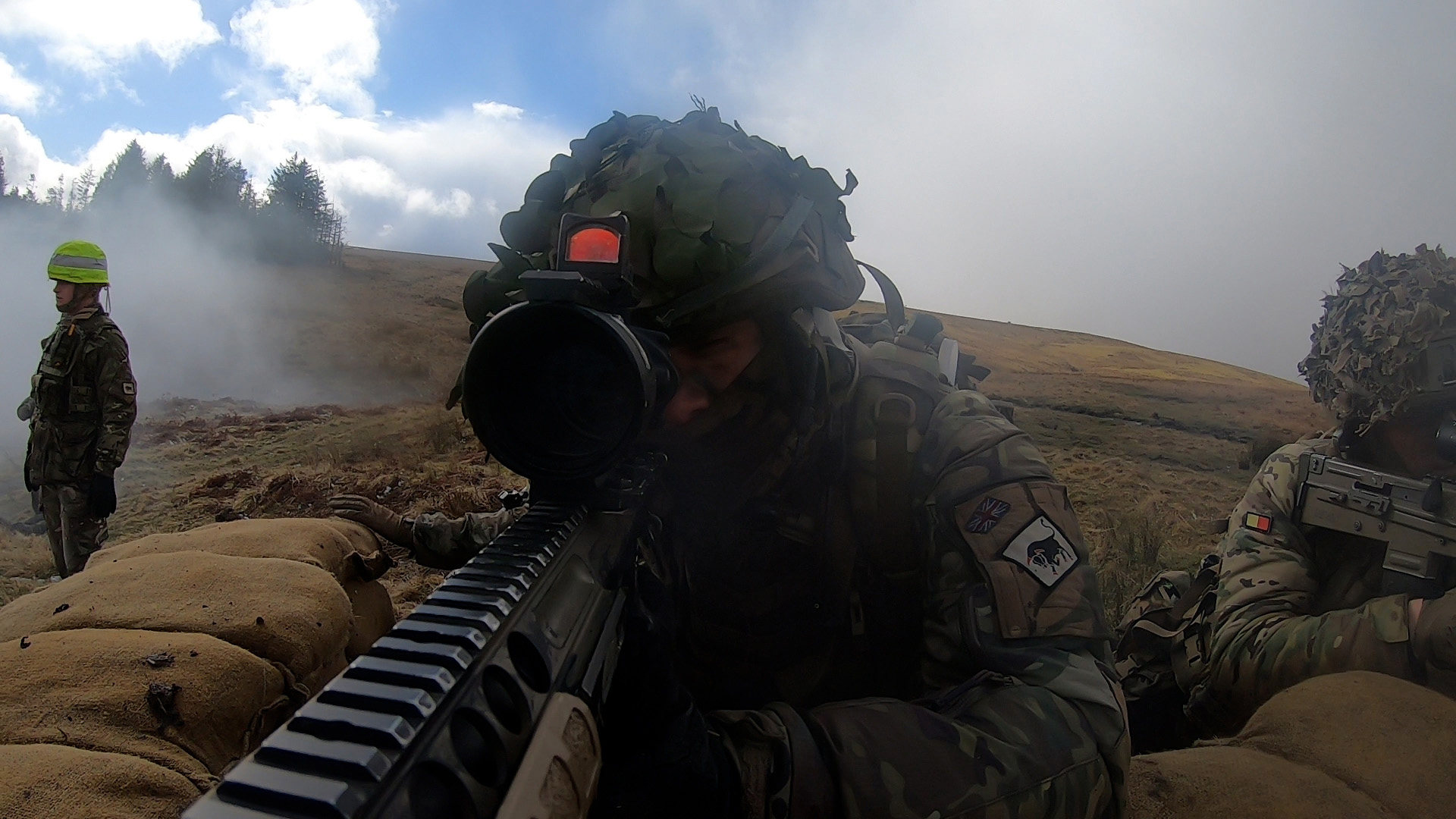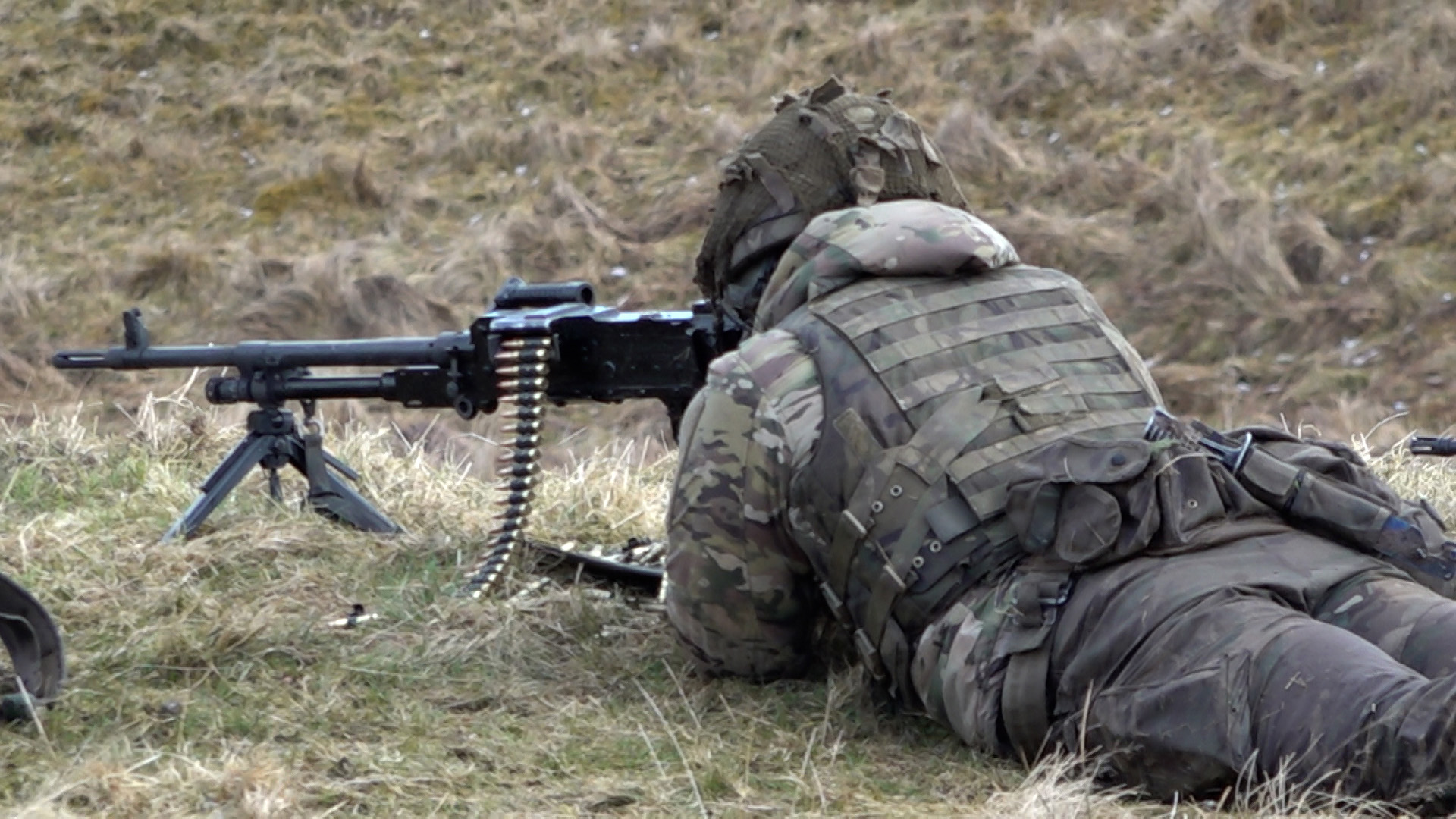Live firing: Keeping soldiers safe when the rounds start flying as part of platoon attack
The unmistakable sound of the General Purpose Machine Gun (GPMG) rattles through the hills of Otterburn, tearing through a belt of 7.62mm rounds.
Today, it's in the hands of machine gunners from A Company (Norfolk), 1st Battalion, Royal Anglian Regiment, better known as the Vikings, who are conducting a live-firing exercise as part of a platoon attack.
These exercises are among the most dangerous training activities the British Army undertakes, with months of meticulous planning going into ensuring they are carried out with precision, discipline, and – above all – safety.
Safety first: no room for error
Before a single round is fired, safety takes centre stage.
BFBS Forces News was invited to observe the exercise up close, experiencing the intensity of live-firing just metres from the action.
The day began with a comprehensive safety brief from the Range Conducting Officer, Captain Howard Gurney, the individual responsible for overseeing the exercise and ensuring all procedures are followed to the letter.
"This process started for me back in January," he explained.
"I came to this area and conducted a recce, which was essentially me walking this range, going through the ground and figuring out in my head how I wanted to run this attack."
Capt Gurney controls the range with a significant number of range safety staff – colleagues looking out for every move, checking the arcs of all the soldiers firing weapons.

He said: "I’m focused on coordination. I rely on a team of safety supervisors who stand behind the firers, and they are sort of agents acting on my behalf.
"What I'm thinking about is coordinating the several different groups of safety personnel on the range to make sure they're in the right place at the right time and no one is at risk."
But safety isn't just a top-down responsibility – it's embedded into every soldier's role.
Every participant undergoes thorough briefings, weapons checks and dry drills before stepping onto the range.
The emphasis is on discipline, control and knowing exactly what to do in every scenario.

When the live rounds start flying, every movement is deliberate.
It's not just about hitting a target; it's about teamwork, communication and maintaining absolute control under pressure.
Mistakes in this environment can be fatal, which is why the British Army relies on tried and tested procedures refined over generations of infantry service.
There is no room for complacency - every action is calculated, every order followed to the letter.
Major Jet Ryan, A Company OC, underlined the significance of training in realistic conditions like those provided by live-firing exercises.
"It's all about closing with the enemy in close combat so we can kill the enemy," he said.
"We practise with bayonets, our individual weapons and machines guns.
"It's all about being ready to do our core job when we need to."

Live-firing exercises push soldiers to their limits, replicating the intensity and pressure of real combat.
The roar of automatic fire, the precise execution of tactical manoeuvres and the unwavering focus required all serve one purpose – to prepare troops for battle.
Behind the firepower, there is one core principle – control. It's this discipline that makes the British Army one of the most professional fighting forces in the world and 1 Royal Anglian one of its most trusted regiments.
From the meticulous planning to the moment the last round is fired, everything about these exercises is designed to turn practising wars into winning wars.









